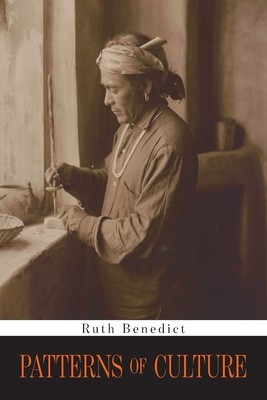
- We will send in 10–14 business days.
- Author: Ruth Benedict
- Publisher: Albatross Publishers
- ISBN-10: 1946963321
- ISBN-13: 9781946963321
- Format: 15.6 x 23.4 x 1.4 cm, minkšti viršeliai
- Language: English
- SAVE -10% with code: EXTRA
Reviews
Description
Facsimile of 1935 Edition. The essential idea in Patterns of Culture is, according to Margaret Mead, "her view of human cultures as 'personality writ large.'" As Benedict wrote in that book, "A culture, like an individual, is a more or less consistent pattern of thought and action". Each culture, she held, chooses from "the great arc of human potentialities" only a few characteristics which become the leading personality traits of the persons living in that culture. These traits comprise an interdependent constellation of aesthetics and values in each culture which together add up to a unique gestalt. Benedict, in Patterns of Culture, expresses her belief in cultural relativism. She desired to show that each culture has its own moral imperatives that can be understood only if one studies that culture as a whole. It was wrong, she felt, to disparage the customs or values of a culture different from one's own. Those customs had a meaning to the people who lived them which should not be dismissed or trivialized. We should not try to evaluate people by our standards alone. Morality, she argued, was relative to the values of the culture in which one operated.
Contents: I. The science of custom -- II. The diversity of cultures -- III. The integration of culture -- IV. The Pueblos of New Mexico -- V. Dobu -- VI. The northwest coast of America -- VII. The nature of society -- VIII. The individual and the pattern of culture
- Author: Ruth Benedict
- Publisher: Albatross Publishers
- ISBN-10: 1946963321
- ISBN-13: 9781946963321
- Format: 15.6 x 23.4 x 1.4 cm, minkšti viršeliai
- Language: English English
Facsimile of 1935 Edition. The essential idea in Patterns of Culture is, according to Margaret Mead, "her view of human cultures as 'personality writ large.'" As Benedict wrote in that book, "A culture, like an individual, is a more or less consistent pattern of thought and action". Each culture, she held, chooses from "the great arc of human potentialities" only a few characteristics which become the leading personality traits of the persons living in that culture. These traits comprise an interdependent constellation of aesthetics and values in each culture which together add up to a unique gestalt. Benedict, in Patterns of Culture, expresses her belief in cultural relativism. She desired to show that each culture has its own moral imperatives that can be understood only if one studies that culture as a whole. It was wrong, she felt, to disparage the customs or values of a culture different from one's own. Those customs had a meaning to the people who lived them which should not be dismissed or trivialized. We should not try to evaluate people by our standards alone. Morality, she argued, was relative to the values of the culture in which one operated.
Contents: I. The science of custom -- II. The diversity of cultures -- III. The integration of culture -- IV. The Pueblos of New Mexico -- V. Dobu -- VI. The northwest coast of America -- VII. The nature of society -- VIII. The individual and the pattern of culture


Reviews